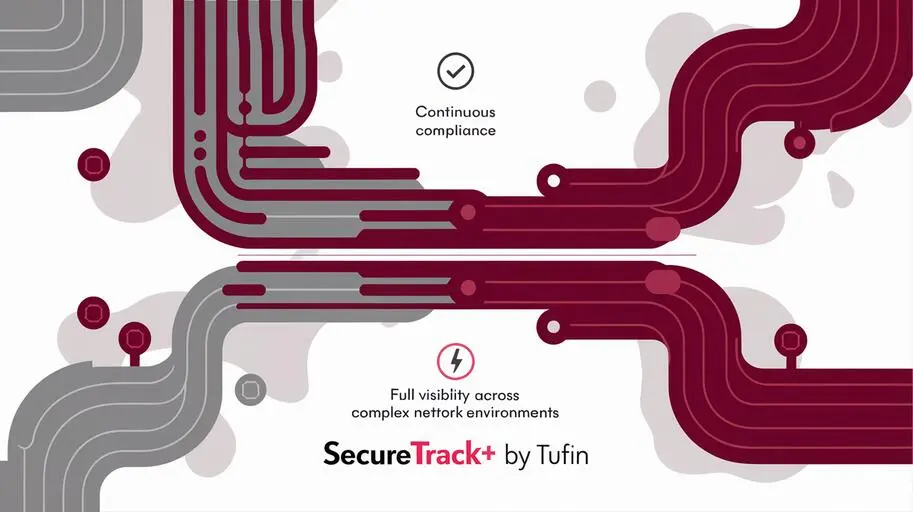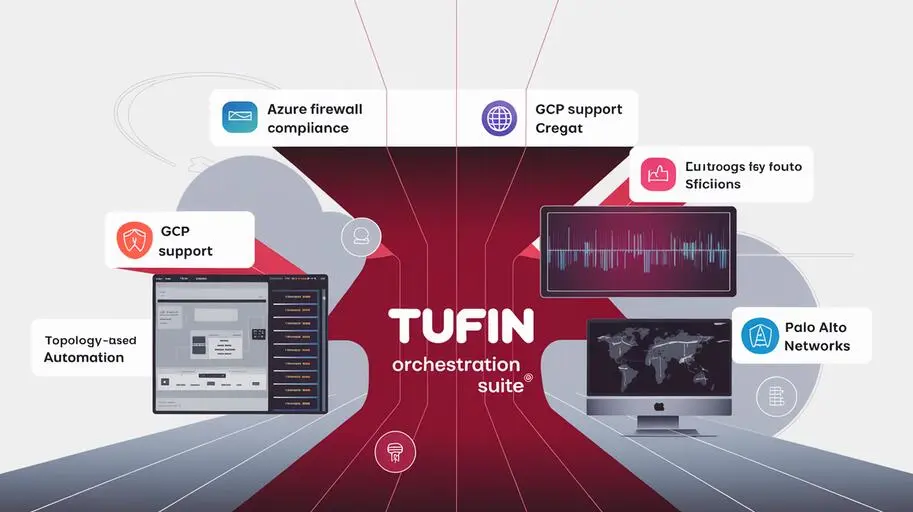In the face of growing network infrastructure complexity and security threats, network operational efficiency is becoming critical for businesses. Tufin solutions help executives reduce risks, optimize costs, and ensure the agility needed for successful digital transformation.
Improving Network Operational Efficiency: How Tufin Helps Executives Reduce Risks and Costs
Modern business is unthinkable without an efficient and secure network. Insufficient management of network infrastructure entails significant risks, increased costs, and loss of flexibility. Tufin solutions offer a comprehensive approach to network security management, enabling companies to optimize operational efficiency, ensure compliance with regulatory requirements, and accelerate the adoption of new technologies.
Current Trends and Challenges in Network Security
Network security today faces a number of serious challenges driven by modern trends:
- Cloud Technologies: The move to cloud services complicates network security management, requiring new approaches and tools.
- Digital Transformation: The introduction of new technologies such as IoT and Big Data extends the security perimeter and increases the number of potential entry points for attackers.
- Increasing Threats: Cyber threats are becoming increasingly complex and sophisticated, requiring continuous improvement of protection systems.
In these conditions, executives face a number of challenges:
- Network Complexity: Managing heterogeneous networks consisting of various devices and platforms is becoming increasingly complex.
- Shortage of Skilled Personnel: The shortage of specialists in the field of network security makes it difficult to maintain the required level of protection.
- Growing Compliance Requirements: Companies must comply with many regulatory requirements, such as GDPR and PCI DSS, which requires additional effort and resources.
Tufin Solutions for Improving Operational Efficiency
Tufin solutions offer a comprehensive approach to network security management, enabling companies to solve complex problems and improve operational efficiency.
Troubleshooting Network Connectivity with Tufin
Tufin solutions significantly simplify and speed up the process of troubleshooting network connectivity. Thanks to centralized visibility and automated analysis, IT professionals can quickly identify and eliminate the causes of failures, reducing downtime and increasing application availability.
Business Benefits:
- Reduced downtime
- Increased availability of critical applications
- Reducing financial losses associated with downtime
- Quick problem diagnosis
- Simplifying the troubleshooting process
Network Security Automation with Tufin
Automation of security policies and network configurations offered by Tufin reduces the burden on the IT department, minimizes the risk of errors arising from human error, and speeds up change processes. This frees up resources to solve more strategic tasks.
Security Policy Management with Tufin
Centralized security policy management allows you to maintain compliance with regulatory requirements, reduce risks, and improve threat visibility. Tufin provides a single point of control for all network devices, simplifying auditing and monitoring policy compliance.
Network Optimization with Tufin
Tufin solutions help identify and eliminate network bottlenecks, optimize traffic, and improve overall performance. Automation allows you to quickly adapt to changes in business requirements and deploy new applications and services. For example, Tufin allows you to automatically configure Quality of Service (QoS) parameters to prioritize critical traffic.
Network Security Visibility with Tufin
Tufin solutions provide complete visibility of network traffic and security policies, which greatly simplifies auditing and improves overall security. This visibility allows you to quickly identify anomalies and respond to potential threats.
Strategic Benefits of Tufin for Business
- Cost Reduction: Automation and optimization provided by Tufin help reduce costs for IT infrastructure, personnel, and compliance with regulatory requirements.
- Increased Flexibility: Tufin allows you to respond faster to changes in business and adapt the network infrastructure to new requirements.
- Risk Reduction: Tufin helps prevent data leaks, network failures, and other security incidents.
- Accelerated Application Deployment: Automating and optimizing the network with Tufin reduces the time required to deploy new applications and services.
Examples of Successful Tufin Applications
Company A, a large financial institution, reduced the time to make changes to security policies by 70% thanks to automation implemented with Tufin. Company B, a retailer, significantly improved the visibility of its network infrastructure and reduced the risk of data leaks using Tufin solutions for centralized security management.
The Future of Network Security and Tufin’s Role
In the future, network security will increasingly rely on automation, analytics and machine learning. Tufin, with its comprehensive approach and advanced technologies, is a strategic partner for businesses seeking to improve operational efficiency, reduce risks, and achieve successful digital transformation. Tufin helps organizations adapt to new threats and requirements, providing reliable protection for the network infrastructure.
Conclusion
Tufin solutions provide significant benefits for businesses seeking to improve network operational efficiency, reduce risks, and optimize costs. Automation, centralized management, and complete visibility offered by Tufin enable companies to effectively manage network security and adapt to the rapidly changing conditions of modern business. Contact us for a personalized consultation on Tufin implementation.
FAQs about Tufin Solutions for Enhancing Network Operational Efficiency
What is network operational efficiency and why is it important?
Network operational efficiency is the ability to effectively manage the network infrastructure, ensuring its security, reliability, and performance. It is important because it directly affects business processes, costs, and the company's ability to adapt in the context of digital transformation.
How do Tufin solutions help improve network operational efficiency?
Tufin solutions offer a comprehensive approach to network security management, including automation, centralized security policy management, and full visibility of network traffic, allowing you to optimize costs, reduce risks, and increase network flexibility.
What are the main challenges in network security that Tufin solutions address?
Tufin solutions help address challenges such as the complexity of managing heterogeneous networks, the shortage of qualified personnel, growing requirements for regulatory compliance (e.g., GDPR and PCI DSS), and adaptation to cloud technologies and digital transformation.
How does Tufin simplify network troubleshooting?
Tufin provides centralized visibility and automated analysis of network traffic, allowing IT professionals to quickly identify and resolve the causes of failures, reducing downtime and increasing application availability.
What does network security automation with Tufin mean?
Network security automation with Tufin involves automating security policies and network configurations, which reduces the load on the IT department, minimizes human error, and speeds up the process of making changes.
How does Tufin help manage security policies?
Tufin provides centralized security policy management, which allows you to maintain compliance with regulatory requirements, reduce risks, and improve threat visibility by providing a single point of control for all network devices.
What strategic advantages does Tufin provide to the business?
Tufin provides businesses with strategic advantages such as reduced IT infrastructure costs, increased network flexibility and adaptability, reduced risks of data breaches and failures, and faster deployment of new applications.
How does Tufin help in network optimization?
Tufin helps identify and eliminate bottlenecks in the network, optimize traffic, and improve overall performance by automating Quality of Service (QoS) settings to prioritize critical traffic and providing flexibility in adapting to business requirements.




